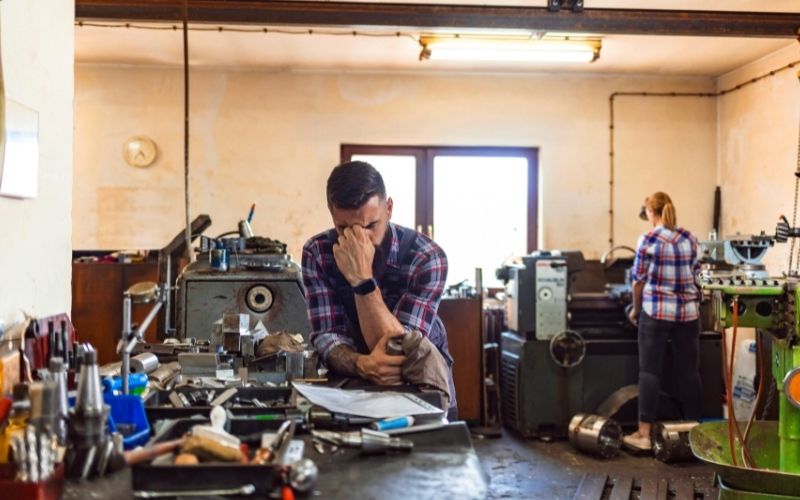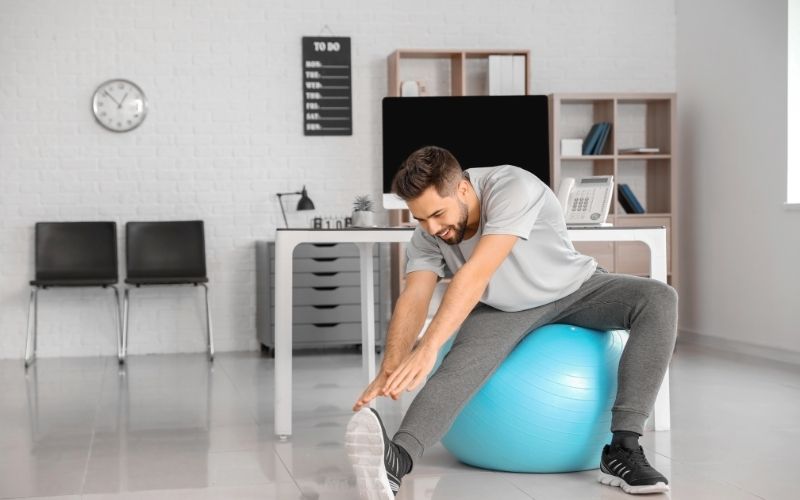Hazards of any sort in the workplace are incredibly unpleasant. No one wants their already busy work day to be interrupted by the chance of being injured.
While safety hazards like falling objects are typically handled with care, ergonomic hazards are easily overlooked. In reality, an ergonomic emergency can be equally distressing and disastrous. An employer may lose an important staff member or face a lawsuit for not taking care of their employees well enough.
Here’s everything you need to know about ergonomic hazards and how to prevent them.
Table of Contents
What are Ergonomic Hazards?
An ergonomic hazard is a physical situation and condition that puts an individual’s (or whole staff’s) musculoskeletal system at risk. This includes muscles, tendons, hands, wrists, nerves, and the lower back.

There are several situations where ergonomic hazards may occur:
- Layout and operation of equipment
- Manual handling like lifting, pulling, and pushing
- Dark or unsuitable lighting
- Noise hazards
- Computer programs and systems
- Workplace design
- Workstation design
An example of an ergonomic hazard is unsupportive office chairs that put unnecessary pressure and strain on an employee’s lower back and pelvic bone. If a chair isn’t ergonomically supported, it can cause chronic back pain; crippling and difficult to heal.
Another ergonomic hazard example in the workplace is requiring staff to be on their feet the entire day. Forcing individuals to stay in a physically-exhausting position all day is unethical and puts a tremendous amount of pressure on their lower bodies.
There may also be less severe but equally important ergonomic hazards in workplaces like hard-to-use computer mouses or desks too high or low.
Ergonomic accidents may happen immediately or develop overtime. For example, pulling your back is an immediate hazard but hunching over a desk is a long-term hazard. Both are painful and should be avoided.
How can Employers Prevent Ergonomic Hazards?
The good news is that there are several ways to prevent ergonomic hazards in the workplace. Here are a few important things for employers to consider when creating a safe and healthy space for their staff.
Desk Height
Providing adjustable desks for employees is a simple way to avoid certain ergonomic hazards. Desks that are too low will cause employees to slouch, while very tall desks will strain their necks.
Adjustable desks are ideal because they acknowledge that people come in all shapes and sizes. If you have an employee who is 5’1” and an employee who is 6’3”, they will not be able to use the same desk comfortably.
Shared working surfaces should accommodate all employees reasonably well.
Regular Breaks
Repetitive motions or no motion at all can lead to an ergonomic disaster. Employers should encourage their employees to take regular breaks. These breaks should involve leaving the workspace and stretching or walking around.

If employees are on their feet while they work, they should be offered a chance to sit down and rest often.
The key is to make working sustainable and comfortable for your employees. While it’s natural to feel tired after a hard day’s work, employees shouldn’t be in pain or chronically fatigued.
Short breaks also encourage a healthy work culture.
Moderate Items Lifted

If your employees are tasked with lifting boxing or other heavy items, regularize the size and weight of the items. This could look like only packing boxes ¾ of the way full or using smaller boxes altogether.
While some employees may be able to lift certain heavy boxes, it doesn’t necessarily mean they should. Setting guidelines on box size and height. You may want to ask your employees their thoughts on what they are comfortable with when setting these guidelines.
Teaching Employees About Safe Lifting

Lifting heavy items safely is instrumental to maintaining ergonomic safety. There are several ways to gently remind your employees about lifting techniques.
Informational training videos and posters are easily-digestible. They stress the importance of bending your knees to pick up boxes and keeping your body aligned as your lower than raise yourself back up.
Knowledge is the best medicine, so keep your employees well-informed on how to stay safe in the workplace.
Use Headsets

Are your employees using the phone a lot during the day? They may benefit from headsets.
Repetitive actions like picking up and putting down phones may cause ergonomic stress. A headset minimizes these types of movements.
It also encourages employees to keep their necks aligned with their spines since they won’t have to tilt their heads to talk on the phone.
Anti-Fatigue Floor Mats
If you’ve ever had to stand up for a long time, you know how taxing it is on your legs and soles of your feet. Anti-fatigue floor mats take pressure off your feet, legs, and knees when standing.

This is an important addition to any work environment that requires employees to stand for long periods. Anti-fatigue floor mats are thick and well-cushioned to compliment the contours of your feet. They usually have anti-slip for extra safety.
If your workspace has concrete floors, you should strongly consider getting these supporting mats. However, anti-fatigue floor mats won’t replace taking regular breaks. Employees should still be allowed to sit down every hour or so to get off their feet.
The Amazon Basics Anti-Fatigue Standing Comfort Mat is an excellent option for employers and individuals looking for support when standing.
In Conclusion
Ergonomic health is incredibly important. As an employer, you are responsible for keeping your employees safe when working.
If you aren’t sure if your workplace has any ergonomic hazards, the best thing to do is ask your staff. Chances are, there are a few ergonomic hazards your employees have noticed.
Have a look at the ways you can prevent ergonomic hazards in the workplace and see which ones you can implement. Most of them are relatively simple and affordable.
Have you ever experienced an ergonomic accident? How do you think it could have been avoided? Let us know in the comments.
Good luck!

My name is Vance, and I am the owner of To Ergonomics. Our mission is to improve your workflow by helping you create a supportive and welcoming environment. We hope that you’ll find what you’re looking for while you’re here.


